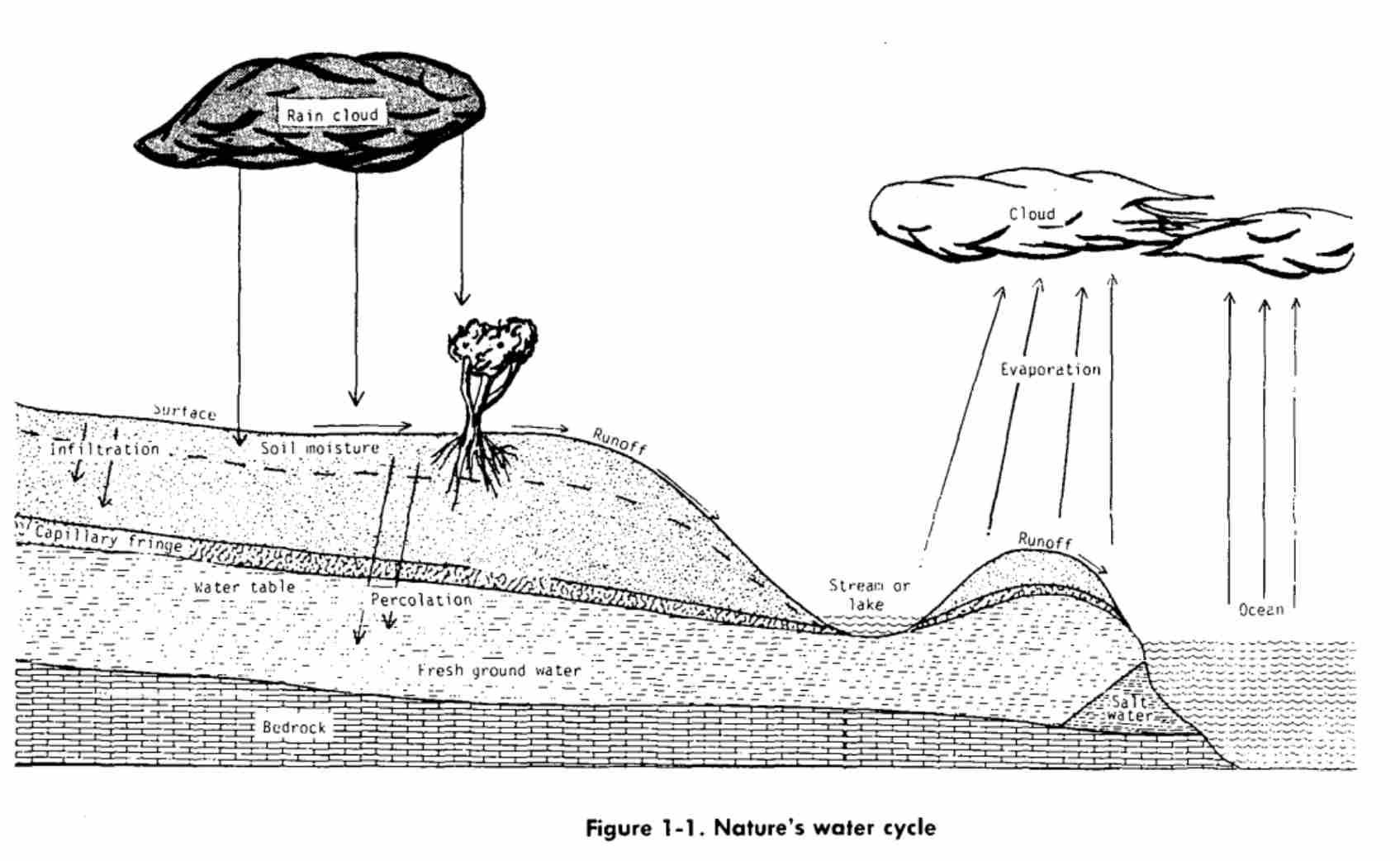The Water Cycle
If over 97% of our fresh water is underground, then less than 3% exists on the surface. Because surface water, in lakes, streams, and reservoirs, is where we can see it and where we apparently can get at it easily, we use far more of it than we do groundwater. In fact, we overuse and misuse our surface water supplies at staggering annual costs, which are far greater than would be necessary to use fully, safely, and properly our groundwater resources.
Groundwater exists simply because the surface of the earth is not sealed tight; it is porous. Rain falls upon the land, and some of it runs off into ponds and streams; some of it evaporates; growing plants return some of it to the atmosphere; and some of it filters down through the soil into groundwater reservoirs. The rain itself, of course, came from the evaporation of surface water supplies, which include the oceans as well as lakes and streams. This continual process of evaporation and rainfall (or snow or sleet) is called the water cycle.
The oceans, which cover 3/4 of the earth’s surface, are the most important sources of evaporation. Only the rain that falls upon the land enters our fresh water supplies. Eventually, a small portion of this rainfall joins a body of groundwater. This water moves through the pores of different materials beneath the surface and may even appear on the surface again at a point lower than that at which it entered the groundwater reservoir. This reentry may be in the form of a spring, or it may simply seep into a stream (thus maintaining stream flow during dry periods). Streams then carry both surface runoff and groundwater discharge back eventually to the oceans. The basic points of the water cycle are illustrated in Figure 1-1.

Contact: Exmork
Tel: 86-15757781695
Whatsapp: 86-15757781695
Email: exmork@exmork.com
Add: Headquarters Economic Park,Yueqing,Zhejiang,China